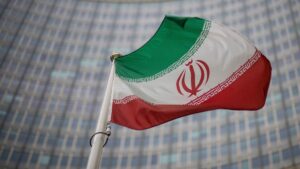
Recent research has revealed that weaver ants exhibit remarkable efficiency in teamwork, defying the well-known Ringelmann effect. This phenomenon suggests that as group size increases, individual effort tends to decline, a trend observed in various species, including humans. However, a study published in Current Biology indicates that weaver ants, known scientifically as Oecophylla smaragdina, manage to become more effective as their numbers grow.
Understanding Team Dynamics in Ants
The Ringelmann effect, identified by French engineer Max Ringelmann in the late 19th century, demonstrates that while total effort may increase with more participants, the average individual input often diminishes. This decline is frequently attributed to challenges in coordination and the phenomenon known as “social loafing,” where individuals exert less effort when working in groups.
Despite this, many animal species, from schools of fish to prides of lions, manage to cooperate effectively in larger groups. The research aimed to investigate whether this principle applied to weaver ants, particularly in their unique ability to work together in forming treetop nests. These ants employ an intricate method of teamwork, creating nests by pulling living leaves and binding them with silk produced by their larvae.
Research Findings and Mechanisms of Efficiency
To assess the weaver ants’ performance, researchers conducted experiments where ants formed chains to pull an artificial leaf attached to a force meter, which recorded their collective force output. Contrary to expectations, the study found that as more weaver ants joined the pulling effort, both total force and individual contributions increased. This indicates that these ants not only circumvent the Ringelmann effect but display what the researchers term “superefficiency.”
The efficiency of weaver ants appears closely linked to their arrangement in long chains rather than in fragmented groups. Observations revealed that ants adopted distinct postures based on their positions within the chain. Rear-positioned ants extended their hind legs, enhancing resistance to slipping, while those at the front maintained crouched postures to exert more pulling force.
This led to the proposal of a mechanism called the “force ratchet.” In this arrangement, the weakest link is not the connections between the ants but their grip on the ground. By increasing ground contact, rear ants prevent slippage, allowing front ants to pull harder, thereby optimizing the team’s overall force output.
The implications of this research extend beyond biological interest. The findings could significantly impact the field of swarm robotics, where teams of small robots are designed to work together to accomplish tasks. Currently, these robotic teams tend to achieve linear scaling, meaning that doubling the number of robots only doubles their output. By incorporating strategies observed in weaver ants, such as the force ratchet, robotic teams could enhance their performance and function more effectively as cohesive units.
This study challenges the prevailing notion of the Ringelmann effect, suggesting that in certain contexts, particularly for the weaver ants, more indeed translates to better. As researchers continue to explore the dynamics of teamwork in ants, they open new avenues for understanding both biological systems and potential applications in technology.
Chris R. Reid, a Future Fellow in Behavioural Ecology at Macquarie University, and Daniele Carlesso, a Postdoctoral Fellow at the Max Planck Institute of Animal Behavior, contributed to this groundbreaking study, highlighting the complex yet efficient mechanisms that govern teamwork among these remarkable insects.







